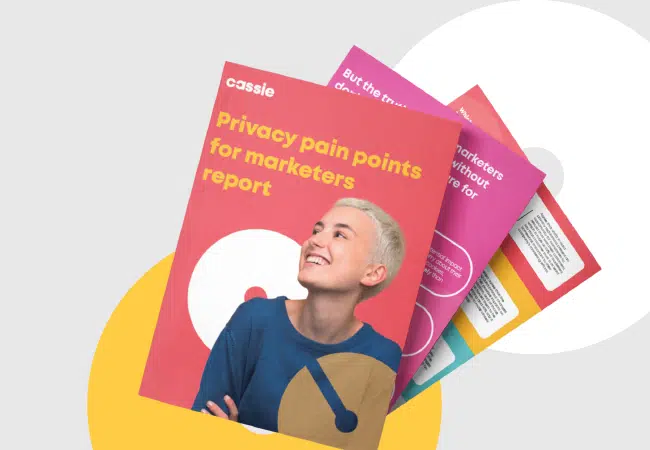How to build a compliance culture in your organization
Posted: July 28, 2023
Increasing globalization, technological advancements, regulatory demands, and interconnected supply chains have all led to businesses becoming more complex.
This means stakeholder requirements have evolved and there’s even more need to address competitive measures.
Compliance management has evolved into a strategic element of business operations that impacts everything from corporate governance to comprehensive risk management.
But when we come to understand compliance at a corporate level, we find it frequently misunderstood.
It is a buzzword that often echoes through the corporate ecosystem when discussions revolve around regulatory and legal matters, risk management, governance, and ethical best practices.
Building a robust compliance culture within your organization is not just a legal obligation but also a strategic imperative.
A strong compliance culture ensures that data privacy principles are ingrained in every aspect of the company’s operations and that all employees are actively engaged in safeguarding sensitive information.
When it comes to following rules, the road is never linear, and compliance is no exception. In fact, it involves navigating rigorous standards and guidelines to steer the organization towards ethical practices.
Continue reading to explore the essential steps to build and mobilize a compliance culture that prioritizes data privacy and enhances your organization’s reputation.
- How to foster a culture of compliance
- 3 actionable steps for building a robust compliance culture
- Warning: avoid just the appearance of compliance
How to foster a culture of compliance
Fostering a culture of compliance simply means creating an environment where adherence to rules, regulations, and ethical practices is valued, encouraged, and integrated into the day-to-day operations and decision-making processes of the organization. It’s akin to creating an environment in which conducting business the right way becomes second nature.
In a compliance culture, employees shift their mindset from meeting legal requirements to upholding high standards, integrity, and transparency. When employees grasp the significance of compliance, they get genuinely involved in contributing their share to attaining what is right rather than doing the bare minimum and ticking boxes.
In the dynamic environment thus achieved, compliance transforms from a mere set of rules to follow into an integral component of the organizational DNA. Its successful implementation establishes a strong foundation of trust and accountability, benefiting everyone in the organization, not just top-tier executives or new hires.
Compliance culture is not just for data protection teams. Whether you’re in HR, marketing, sales, finance, or any other department, being compliance-aware is vital to an organization’s collective success.
Compliance isn’t just about ticking boxes; it’s about creating a seamless and secure experience for customers. By maintaining compliance, businesses ensure that their data is handled with care and respect, building long-lasting relationships.
3 actionable steps for building a robust compliance culture
Compliance needs to be more than a set of rules that employees otherwise feel obliged to follow. This is where the necessity of culture comes in. It can be effective across organizations only when they actively participate in their responsibilities and take ownership of compliance initiatives.
Here’s a step-by-step guide to cultivating a culture of compliance at your organization:
1. Lead from the front
The organizational DNA that informs the ongoing growth, development, and success of compliance culture sprouts at the top (and can abruptly end here too, given that leaders are not committed). If authority figures lead by example, it can be the best way to change and create a company’s compliance culture.
Leadership teams should communicate the value of compliance, expectations, and the organization’s value to the employees. They should share their vision to set the compliance culture, react promptly to any non-compliance, and devise strategies to monitor ongoing compliance through inspections, investigations, regular risk assessments, and simulations to test knowledge.
In a compliant culture, leaders do more than communicate the rules to be obeyed. They consistently model innovative approaches derived from industry best practices. They follow through on the outlined procedures to demonstrate their dedication to principled behavior and compliance. Their active engagement, strong commitment to integrity and ethics, consistency in making ethical decisions, and adhering to the company’s values set the atmosphere for the entire organization.
2. Fostering employee engagement and accountability
A notion should be instilled across the company that compliance is everyone’s responsibility. The leadership team should develop a comprehensive code of conduct outlining the organization’s values, ethical standards, and expectations for all employees.
Employees should be given the authority to make decisions and held accountable for their actions. HR should help establish an accountability structure with clarity around whom individual employees can report to should the need arise.
Designated risk owners should be given the role of managing key risks on behalf of the organization. Clear responsibilities should be assigned to them as they are custodians of compliance, driven not by a ‘win at any cost’ mindset but by a commitment to transparency and ethical practices.
Involve employees in the development and improvement of compliance policies and procedures, along with communicating the importance of compliance and its impact on the organization’s success to them. If they feel involved, it will likely create a sense of ownership and can also result in feedback and new ideas for the compliance process.
3. Implementing effective training programs and communication channels
Training employees is the most obvious part of creating a compliance culture. It involves imparting clear, concise, and comprehensive awareness training to each employee and relevant stakeholder. Even small details matter in training programs, so it’s worth recording the training session so that employees can refresh their memory on the missed details.
An appropriate communication platform that suits the organization’s size and structure should be selected. The leadership team should develop a comprehensive plan outlining the information to be communicated, its frequency, and through which communication channel. The plan should consider varied types of communication, such as policy updates, training schedules, reporting guidelines, etc.
It’s also important to prioritize compliance training programs after an employee’s initial onboarding. As industry-wide changes and updates keep happening, companies with a compliance culture mindset should focus on expanding their employees compliance awareness and skills. They should conduct annual training reviews with updated information.
Try to make sure that training programs are not boring, but fun. If sessions are interactive and filled with case studies, real-life scenarios, and quizzes, participants will pay attention. Additionally, training should not be a once-and-done exercise. Instead, it should be conducted regularly to close knowledge gaps and upskill employees.
Warning: avoid just the appearance of compliance!
Compliance culture should be rooted in the organizational DNA. Just making the organization appear compliant is not enough! Compliance culture speaks for your workforce’s attitudes and beliefs around both corporate and regulatory compliance. It can benefit an organization’s legal standing, reputation, and employee well-being.
The importance of a leadership team plays a crucial role in embedding compliance culture in the mindset of employees, as their commitment can foster responsibility and ownership in each employee’s work ethics, which they’re assigned to deal with.
If employees are trained right off the bat with awards for achievements and penalties for non-compliance, they will have a deeper understanding of the damages or rewards that little disobedience to rules can cause. If they understand their value to the organization’s well-being, they will dedicate themselves to working in sync with others to achieve the common compliance goal.

68% of the most-visited websites fail GDPR compliance tests
Many organizations are still not compliant with cookies. Consumers expect more from the brands they choose to spend with. Learn how to make informed decisions on your cookie policy that keep you compliant and enhance customer experience.

